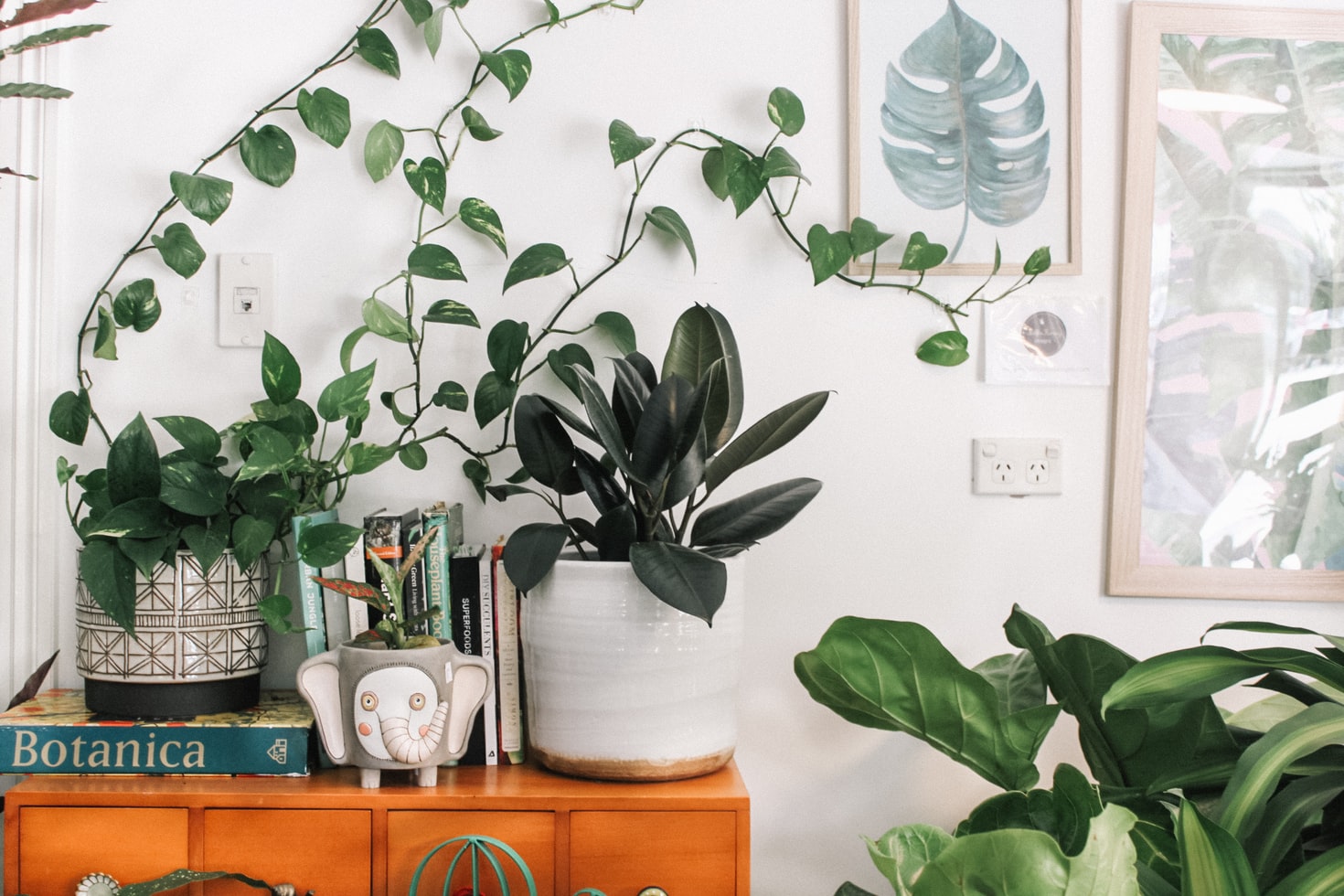Jump Ahead To:
Moving plants long distances can be a big challenge. It is important to know how to properly care for them and how to pack them so they stay healthy when moving plants for distances. You may have seen tips on how to move house plants, but how do you move outdoor plants? If you are moving long distance, how will you ensure that your plants survive? Here are some great strategies for moving plants long distance, and making sure your beloved plant survives the long trip to a new home and stays viable and healthy along the way.

Is moving plants long-distance possible?
Plants can be a real hassle to move. If you’re moving across state lines, you must know most country relocation companies don’t allow the transport of plants and many won’t do so due to certain laws in your destination state that may not exist at home, or because there is potential liability involved with transporting them. Even if they agree to take on this responsibility for whatever reason then remember: hiding your plants among other belongings could void any protection from damage caused by those pesky flora as well as invalidate their contract when something does get ruined during the move.
All states that heavily rely on agriculture—including California, Texas, and Florida—are very concerned about harmful insects and invasive species of plants that could damage crops. Several have strict regulations on bringing in plants from out of state. Unfortunately, the USDA even forbids the transport of some plants entirely. Check out the USDA’s full list of regulated plants, found within all 50 states and U.S. territories.
To ensure that you don’t risk having your plants confiscated at border checkpoints, you’ll need to research the rules in each state you travel through before you load plants for the long-distance trip. You need to research before departure time. Indoor plants may be brought into some states, but must be re-potted before transport. Inspections of plant materials are carried out before they can be brought home. Most highly-recommended long distance relocation service companies don’t transport plants ( but ask ahead of time ).
Determination is the key to successfully moving house plants long distances. You’ll either have to use your vehicle (you’ll need special care to do this) or a rental truck. And remember to always bring water with you to maintain a comfortable temperature. Also remember: If you plan to use your car, don’t stuff your plants in a box. Instead, be sure to give your plants plenty of room and space. Keep temperature-sensitive or fragile plants in the front, near access to AC or heat, and you can keep an eye on them. Plants may be packed in the backseat and secured with seat belts. (Keep a stock of plants if you have a lot of them.) Avoid packing plants in the trunk because the airflow is restricted, and avoid open vehicles, like pickup trucks, altogether. Because of the sunlight and airflow concerns, transporting plants in the front cabin of a rental truck is ideal.
Need to move? Check us out in these cities:
- New York City Movers
- Dallas Movers
- Boston Movers
- Philadelphia Movers
- Pittsburgh Movers
- Los Angeles Movers
- San Francisco Movers
- Washington DC Movers
- Charlotte Movers
- Las Vegas Movers
- Find Movers Near You
Preparing your plant for the long-distance move
You can’t just plop your leafy friends into a box and head for the door. This is prep time, and you need to prep them first. After you pick out the perfect transportation method, it’s time to remove dead leaves or pests from each plant before transporting them so they’re in optimal shape when they arrive at their new home with plenty of room for growth. There are some special considerations for plants moving long distances. When your plant is getting ready to travel, it’s important not only to water well ahead of time but also to consider the temperature and humidity at both locations so that you can keep them healthy on their journey.
Now is the time to gather all the packing supplies necessary for proper relocation. A lot of boxes, crates, and bags will be required. Proper packing will ensure your vegetation survives the long trip. Begin packing at least three weeks in advance. There is enough time to get everything done, organize, and pack. Be sure to pack extra boxes or crates in case you need them. Plan on packing heavily based on the availability of greenery and their size. Packing tips to remember for long-distance travel are:
- Organize your plants according to families (botanical friends) and size if you’re relocating more than one.
- Using a plastic bag, place it over the pot, and tie it at the base, so the soil doesn’t spill around.
- The aim is to keep every pot( you can also use lightweight plastic pots) standing upright during the whole trip. You can do it by playing Tetris with space you have inside the box or crates with flora.
- Place as many pots in the box or a crate and make sure that they can’t move. Fill the space around the pot with packing paper and cover it with bubble wrap.
- If you’re using crates, make sure that they’re stackable, but don’t stack heavy greenery on top, no matter how big and heavy the plant is below. It can damage the leaves or even ruin the whole plant below.
- If you’re going with boxes, make holes in the walls so that your flora can breathe.
If you are looking to hire movers for your plants, consider looking into this guide on comparing moving company quotes for insights as to whether a company charges extra for that service, or even offers it at all.
How to move plants in pots
For long-distance shipping, always use plastic pots.
Moving houseplants long distances can be problematic, as you should take some steps to ensure that the pots aren’t broken and the plants themselves remain safe. For smaller plants, you can secure them within a shipping container. To avoid moving around or clinking, use crumpled paper, dividers, or bubble wrap. Wine shipping boxes are perfect for this. Leave the top open to allow for ample airflow.
For larger plants, it’s preferable to use plastic pots. Also, lugging heavy pots around helps ensure that your delicate pieces don’t get broken during the move. You can use a more eco-friendly planter if you’d like to avoid plastic. You should also cover the top of the planter with cardboard or a bag to prevent the soil from spilling. Transfer your plants two weeks ahead of schedule. Before beginning the move, ensure the moisture level is just right and give them time to adjust to their temporary housing.
How to send plants in the mail
Polymer crystals mixed with a little water will help trickle water out gradually. When shipping your plants, make sure they are packed and protected from damage. There should be no pot in this case. Instead, wrap the roots in a few wet paper towels, and then wrap that with a plastic bag. Add a little polymer moisture crystals to water and apply this slurry to the roots before wrapping it in plastic. You can roll the plant in a newspaper to help protect the stems and leaves.
A sturdy box is a good choice, but you don’t want the plant to move around inside. All space around the plant should be filled with newspaper and bubble wrap to secure it. Use “fragile,” “live plant,” or “this end up” to indicate the box is delicate. Finally, send it on Monday. Running the USPS on the weekends increases the odds your plant spends several days in a dark room. Also, check the weather for the day your box arrives to ensure your plant doesn’t freeze or wilt. If you’ve taken this much trouble to transport your plant, you probably want to choose the quickest delivery option! Ensure you aren’t breaking any rules when shipping plant items via mail, particularly avoid exposing them to extreme temperature both of cold weather and warm weather.
Unpacking and recovering
Once you’ve arrived at your destination and unpacked, be sure to open the boxes and unload the crates immediately. Remove the herbs, plastic bags, and water them. After a few weeks, you will see them regaining their leaves. This is a normal reaction to the change and will go away. Boxes should be opened without spilling soil or breaking herbs. Starting from the bottom, cut the tape, set the box upright, and pull it up so you don’t damage the branches. You must now locate a place for the plant in your new apartment, and take care of it.
- The 5 Best Neighborhoods in Saint Louis (Updated 2024) - March 15, 2024
- Is Moving to Pennsylvania Right for You? A 2024 Guide. - March 4, 2024
- The Best Neighborhoods in Cleveland (Updated 2024) - February 15, 2024



